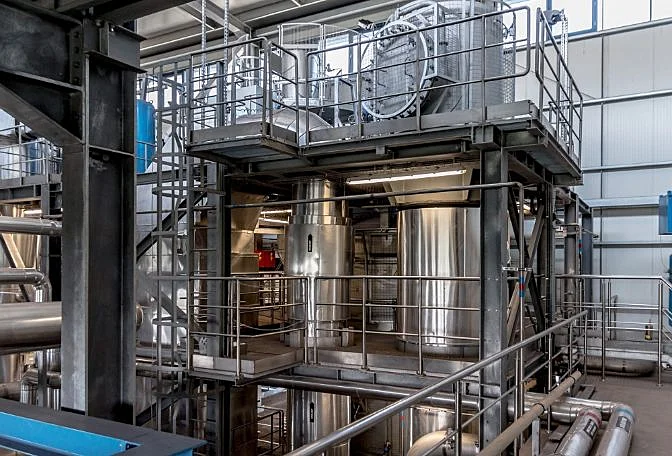Boiler inspections are essential for any industry that relies on industrial boilers. Discover how these inspections are carried out and the advantages of using drones in the process. Boilers operate under extreme pressure and temperature fluctuations, often experiencing swings of hundreds of degrees Fahrenheit. Without regular inspections, hidden flaws can develop into serious issues over time, potentially leading to catastrophic failures such as explosions that endanger workers and damage equipment. Regular boiler inspections help identify and track potential problems before they escalate, ensuring safe and efficient operation. This guide explores what a boiler is, how inspections are conducted, the role of boiler inspectors, and the benefits of using drones for these tasks. Before diving into the inspection process, it's important to understand the basics of boilers. A boiler is a closed vessel designed to produce hot water or steam, which serves as a power source for various applications. In industrial settings, boilers are used for power generation, production processes, and climate control systems. A boiler generates steam by burning fuels like coal, oil, or gas, transferring heat to water inside the vessel. This steam is then used to power turbines, provide heat, or support manufacturing processes. Boilers use combustion to create heat, which is transferred to water through conduction, convection, and radiation. The system is pressurized to increase the boiling point of water, making the process more efficient. Different types of boilers include fire-tube, water-tube, recovery, and biomass boilers, each suited for specific applications. Boilers are widely used in industries such as Oil & Gas, Power Generation, Chemicals, Steel, Cement, Textiles, and many others. Their role is crucial in maintaining operational efficiency and safety across these sectors. Boilers must be inspected regularly due to their high-pressure and high-temperature environments. Over time, components can wear down, leading to leaks, cracks, or other structural issues. Safety is the top priority during inspections, with the goal of preventing accidents and extending the boiler’s lifespan. Most regulations recommend an annual inspection for large boilers, typically when the boiler is cool and depressurized. Some organizations also suggest an additional external inspection halfway through the year while the boiler is under pressure. Boiler inspections are performed by certified professionals who specialize in this field. Many companies choose to outsource these inspections to ensure expertise and compliance with standards like ASME and API. During an inspection, both internal and external components are checked for signs of wear, corrosion, or damage. Key areas include the boiler room, nameplate, safety valves, piping, and internal walls. Manual inspections require scaffolding, which can be costly and time-consuming. Drones offer a safer and more cost-effective alternative to manual inspections. They reduce the need for scaffolding, improve access to hard-to-reach areas, and provide higher quality data. Flyability’s Elios series is specifically designed for confined space inspections, making them ideal for boiler assessments. Drones eliminate the need for human entry into hazardous environments, significantly improving worker safety. Using drones can cut inspection costs by up to 90%, avoiding the expense of building and removing scaffolding. Drones can reach tight spaces and capture detailed images of critical components like burners and tubes. Drones equipped with LiDAR and high-resolution cameras provide accurate 3D mapping and detailed visual data. Increased inspection frequency with drones can lead to reduced greenhouse gas emissions, supporting sustainability goals. Watch this video to see how a drone is used for boiler inspections: Explore more case studies to learn how drones are transforming boiler inspections: Safe Seal Technology Co., Ltd. , https://www.sprsealkits.comBoiler Inspections: A Complete Guide

Boiler Inspection Basics—What Boilers Are, What They Do, and the Industries That Use Them
What Is a Boiler?
How Do Industrial Boilers Work?
Which Industries Use Boilers?
What Is Inspected in a Boiler Inspection?
How Often Are Boiler Inspections Conducted?
Who Conducts Boiler Inspections?
What Is Inspected in a Boiler Inspection?
Five Benefits of Using Drones for Boiler Inspections
1. Safety
2. Cost Savings
3. Improved Access
4. Better Data Collection
5. Environmental Benefits